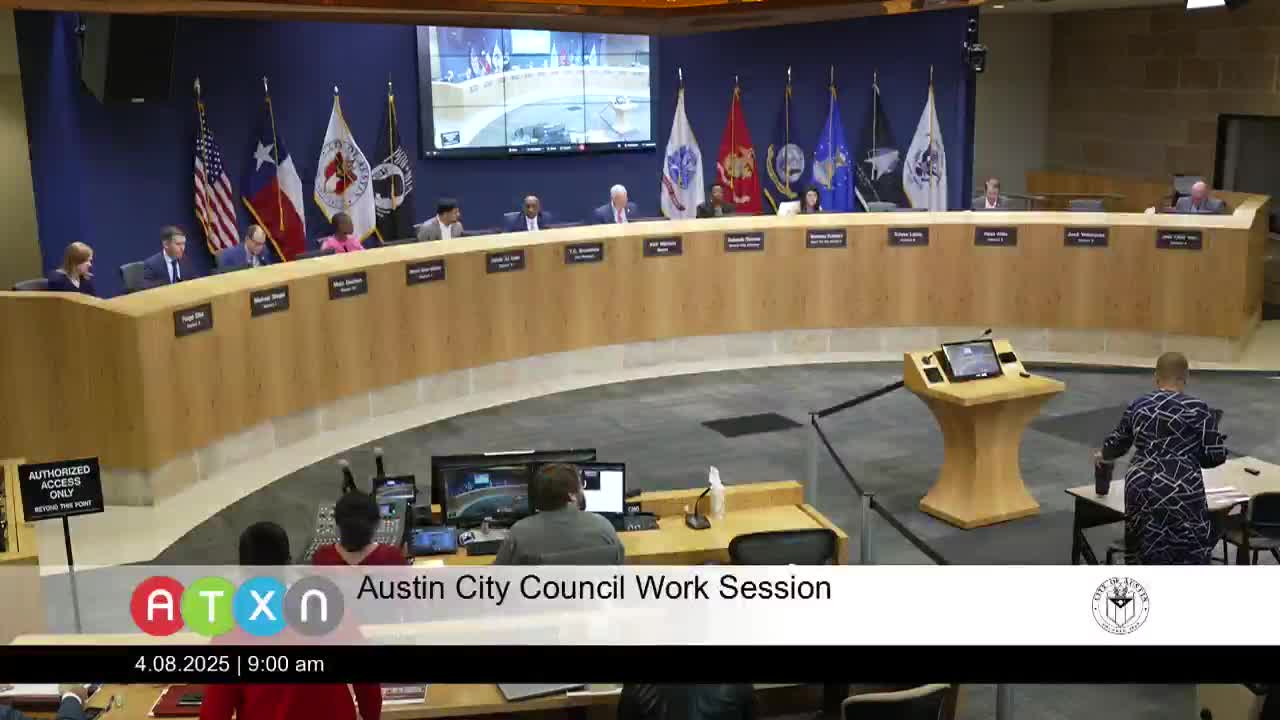City officials unveil five-year financial forecast amidst tax revenue challenges
April 08, 2025 | Austin, Travis County, Texas
This article was created by AI summarizing key points discussed. AI makes mistakes, so for full details and context, please refer to the video of the full meeting. Please report any errors so we can fix them. Report an error »

The Austin City Council held a work session on April 8, 2025, focusing on the city's five-year financial forecast as part of the ongoing development of the proposed 2026 and planned 2027 budgets. The session began with a briefing from city staff, highlighting the financial challenges ahead, particularly a 3.5% property tax revenue cap and a slowdown in sales tax revenue growth.
City Manager's office staff presented an overview of the financial forecast, indicating anticipated deficits in the coming years. The current forecast estimates a revenue shortfall of $5.7 million for fiscal year 2025, primarily due to a projected $7.9 million decline in sales tax revenue. Other revenue sources, such as alcohol beverage sales, are also expected to decline, although the Emergency Medical Services (EMS) department anticipates a $4.1 million increase in reimbursements due to improved billing efficiencies.
The discussion included a detailed timeline for the budget process, with the proposed budget set to be presented on July 15, followed by several work sessions and a public hearing on July 31. The council aims to adopt the budget in August.
Key cost drivers for the forecast were outlined, including a 5% increase in health insurance contributions and a 3.5% wage increase for civilian employees. The forecast also anticipates increases in costs related to pensions and internal services, with public safety departments consuming approximately 65.2% of general fund expenditures.
The forecast indicates a structural imbalance in the general fund, with revenues growing slower than expenditures. The projected deficit for fiscal year 2026 is $33.4 million, escalating to $79.9 million by the end of the forecast period. The city is working to identify areas for potential reallocations to address community priorities.
In conclusion, the meeting underscored the financial hurdles facing Austin as it prepares for the upcoming budget cycle, with staff committed to refining revenue assumptions and exploring savings opportunities in the months ahead. The council will continue to engage with community stakeholders as it navigates these challenges.
City Manager's office staff presented an overview of the financial forecast, indicating anticipated deficits in the coming years. The current forecast estimates a revenue shortfall of $5.7 million for fiscal year 2025, primarily due to a projected $7.9 million decline in sales tax revenue. Other revenue sources, such as alcohol beverage sales, are also expected to decline, although the Emergency Medical Services (EMS) department anticipates a $4.1 million increase in reimbursements due to improved billing efficiencies.
The discussion included a detailed timeline for the budget process, with the proposed budget set to be presented on July 15, followed by several work sessions and a public hearing on July 31. The council aims to adopt the budget in August.
Key cost drivers for the forecast were outlined, including a 5% increase in health insurance contributions and a 3.5% wage increase for civilian employees. The forecast also anticipates increases in costs related to pensions and internal services, with public safety departments consuming approximately 65.2% of general fund expenditures.
The forecast indicates a structural imbalance in the general fund, with revenues growing slower than expenditures. The projected deficit for fiscal year 2026 is $33.4 million, escalating to $79.9 million by the end of the forecast period. The city is working to identify areas for potential reallocations to address community priorities.
In conclusion, the meeting underscored the financial hurdles facing Austin as it prepares for the upcoming budget cycle, with staff committed to refining revenue assumptions and exploring savings opportunities in the months ahead. The council will continue to engage with community stakeholders as it navigates these challenges.
View full meeting
This article is based on a recent meeting—watch the full video and explore the complete transcript for deeper insights into the discussion.
View full meeting
